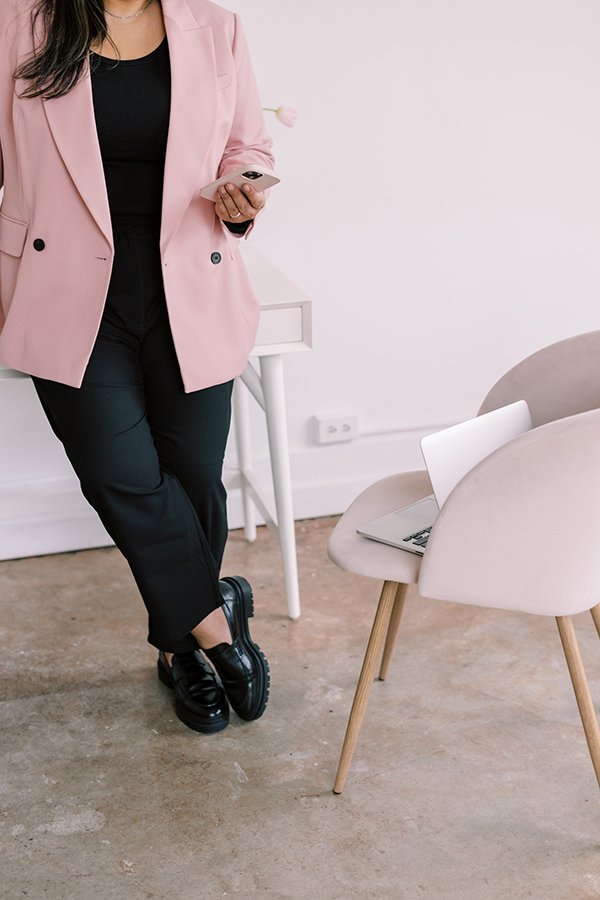Blog Flipping Investment: How Much Money to Start This Business
An ice-breaker blog post after a very long pause on this site, and today, I’d love to write and share about the money side of my blog flipping journey: the blog flipping invest, aka how much money I spent from the beginning, then every year from 2021 to 2023, and how much you should expect to spend if you want to start a blog flipping business of your own!
As you can imagine, there will be a lot of information here, so grab your coffee, your note-taking tools, and let’s talk money!

How I Started with Blog Flipping
When I started the whole journey in June 2020, I already had over six years of experience with WordPress, hosting, setup, basically the simple technical stuff. At that time, I had two travel blogs running so my initial investment in blog flipping was low.
I bought just two domains, and no other expense. Back in time, they cost around $10 each, so my very first investment was $20.
One domain got sold for $89 within a month, while the other one was developed into a tiny niche site, got listed with Chelsea Clarke at Niche Investor marketplace (it was still Blogs for Sale then), and sold after almost a year at $550.
Right after the first win, I got hooked to blog flipping. And, within the second half of 2020, I invested over $800 in domains and listing fees (both Flippa and Niche Investor).
I didn’t buy any themes or any fancy plugins. The hosting was there, so the investment was just domains and listing fees.
I had 23 domains at that time, and all was sold within 2020 or a year later. I even bought a site on Flippa for $75 and flipped it short after for over $600!
However, the success fee, PayPal fee, and Escrow fee took up a big chunk of the selling price, so I didn’t really make much profit.
Blog Flipping Investment of 2020
- Domains (one was an existing blog): $303
- Hosting, themes, plugins: $0
- Listing fee, success fee, transaction fess: $1,125
That was the very first step for a blooming online digital asset business years later! The following years, I kept buying more domains, invested in three hosting providers to expand my business, and paid for premium PLR packages and AI-tools to help me with my content creation and SEO.
Here are how many domains and how much investment (not 100% accurate since there will be some things here and there I missed) I made after 2020:
2021
I bought 160 domains (and a few very small starter sites along the way). The investment was over $6,000. 79 sites were sold.
The investment were still very basic:
- Domains
- All kinds of fees
- 2 new hosting providers
- PLR subscriptions / single packages
- Jasper Boss Mode
- Premium themes
- Plugins
2022
I had 175 domains in my vault, and the investment was almost $14,000! Out of that only 127 sites were sold.
The investment for this year was almost the same like in 2021, except for:
- My VA Sofia
- More on hosting
- More on premium themes & plugins
2023
October 2022 I came back to work, and 2023 was my corporate year. I listed 54 sites but just 44 were sold. The investment was over $11,000.
Again, the investment was almost the same. However, 2023 was the year I brought in:
- A short-term AI content writer (3-month contract)
- Koala
- A few AI tools to help with keyword & niche research (I’ll mention all of them later)
2024
We’re now in the third week of February 2024 so obviously it’s too soon to say anything about the year. I also made a promise with my VA to not buy more domains unless it’s a really great deal I cannot pass on.
So far, I started the year with 198 domains. 17 sites were sold and a handful of sites are being listed. The domains investment itself has been over $5,600. Also, it’s too early to have any recurring payment due.
So, numbers are interesting, right? Every time I need motivation, I just went through all the numbers to see how much my blog flipping business has developed throughout the years.
Now, you may think, “Wow, that’s a lot of money invested!” But let me tell you, it’s worth every penny. Investing in premium themes and plugins has significantly improved the aesthetics and functionality of my sites, leading to higher sales and ultimately, higher profits.
Hiring a VA has also been a game-changer for me. With her help, I am able to focus on the more important tasks of buying and selling sites, like finding potential buyers, working on our business plan, while she takes care of the day-to-day operations.

Must-Have Investment
OK, if you’re into this flipping websites business and want to become a full-time blog flipper and make a consistent income, there are a few investments you should make without hesitation.
First Thing First: Hosting and Domain
Straight forward. I don’t need to explain anything here but just my advice:
- For domains, go for Namecheap. Don’t even bother with GoDaddy.
- For hosting, check out hosting providers who have free SSL included.
- If you’re more into aged domains, stay tuned for my next blog post where I’ll share my secret strategy on how to find & acquire them.
For this part, let’s say you want to start with 10 domains first, so the investment will be around $200 for domains and $100 for hosting.
TOTAL: $300
Themes & Plugins
I’m now using Hearten Made themes for almost all of my sites. Her designs are so beautiful and easy to customize, but of course, the price tag are quite high for beginners.
The alternative is Blossom Themes. They have agency license for business like this. Also, the lifetime deal is more affordable, just $399. The annual subscription is just for $149!
For plugins, I have:
- WP Rocket
- Link Whisper
- A migration plugin for site transfer, but if you’re tech savvy, you can do it without plugin.
Since they’re not must-have (I mean, you can still use free theme, and no need for any plugin whatsoever), I’ll say around $300.
TOTAL: $300
Keyword Research Tools
Unless you don’t care at all about SEO and keyword research like I was, you don’t have to worry about this.
To be honest, when I first started, my idea was stupidly simple: the buyer will acquire the site, and they will work on the keyword research themselves. I just wrote the articles and called it a day.
But now, the market has become more competitive, and if you cannot provide great value from the get-go, your business will easily be forgotten.
With that said, I would suggest getting a subscription to one of the following:
- RankIQ: Higher end, more suitable if you want to grow your own blog or work on an established site for sale. Price: $29/month
- Keysearch.co: Extremely powerful, yet the price is unbeatable. Hands down the best tool for keyword research that I’ve ever used. Price: $169/year
- NicheFinder.io: This tool is from Mike Futia from the famous Stupid Simple SEO course. If you don’t know which niche you should start to have a better change to succeed, his tool is a solid investment. Price: $297/lifetime (I was sooooo lucky I bought it when it was just $99 and it was combined with his other course – Niche Site Academy)
TOTAL: $814 for the first year, but from the second year is $517 only.
Pre-Made Content & Writing Tools
If you’re a native English speaker who can write without any problem, you can simply ignore this section. But, even then, think about the time you have to spend on one single blog post.
For example, for me to write a 1250-word newsletter to my reader, I need three solid hours. Sure, part of it is because English is not my first language, but there is still a lot of time invested. And for a proper blog post, you’ll need to do research, properly format the article, and make sure it’s SEO optimized. All of these take time and effort.
That’s why investing in writing tools can be a wise choice. These tools not only help you in correcting grammar mistakes but also improve your overall writing skills. Some popular options are:
- Jasper: A powerful AI writing assistant that helps you to write faster and better. It can generate topic ideas, improve your tone and style, and even help with SEO optimization.
- Grammarly: One of the most popular grammar checking tools out there. It checks for spelling mistakes, grammatical errors, punctuation issues, and even suggests improvements in sentence structure.
- Hemingway Editor: This tool helps you to make your writing clear, concise, and easy to read. It highlights wordy sentences, unnecessary adverbs, and complex words that can be replaced.
- Koala & a bunch of other AI-powered writing assistants: These tools are specifically designed for content marketing and help with tasks such as generating headlines, analyzing readability score, and optimizing for SEO.
I truly believe the most powerful tools are the tools you use. People will have opinions about what works and what not, et cetera, et cetera, and do you think you’re gonna try them all? No, you’re not.
So, it’s important to find the ones that suits you best, both financially and functionally, stick with it, use the most out of it, and see how you can use it your way for the best result you want.
Another thing you can invest is PLR, or I’ll say pre-made content. They can be used to quickly create content that you can post on your blog, website, or social media platforms. You don’t have to spend hours researching and writing articles from scratch.
However, PLR content should be used with caution as it can sometimes be low quality or irrelevant to your audience. Make sure to thoroughly review and edit any PLR content before publishing it.
There was I time I bought a PLR vault of over 2 million pieces of content for just $99. Needless to say, most of them are crap, and the word “quality” is not even in their dictionary. But anyway, I think the key takeaway here is to be very selective and cautious when purchasing PLR content.
For this part, let’s say you have Koala for $99 per month and Jasper for $39 per month. I personally think it’s a nice combination to start with!
TOTAL: $138
Photos and Visual Content
Unless you use AI-generated photos straight from your AI-writing tools, you’ll need to find photos or other visual content for your blog posts and social media.
Fortunately, there are plenty of resources available online where you can download free images and videos, or even create your own visual content.
You probably already know about sites like Pexels and Unsplash where you can find high-quality stock photos for free. But if you really want your sites to stand out, you might want to consider creating your own visual content. This can be anything from original photos, infographics, animations, or even videos.
Don’t worry if you’re not an expert in graphic design or photography. There are plenty of affordable tools and resources available online that make it easy for anyone to create professional-looking visuals, like Canva and Rawpixel.
For this section, here are two investment I can highly recommend. You can do both, or one of them if you have a tight budget, but trust me, they’re worth every penny!
- Unsplash+ at $48 per year
- Rawpixel lifetime deal at $399 (again, I was extremely lucky to had it back in 2019 when it was $119 or something like that).
TOTAL: $447 if you go for both of them
VA and Freelancers
As your business grows, the time may come where you need extra help to manage your AI writing and content creation tasks. Hiring a virtual assistant (VA) or freelancers can be a great option to lighten your workload and focus on other important aspects of your business.
There are various platforms where you can find VAs and freelancers like Upwork, Fiverr, and Onlinejobs.ph. Before hiring, make sure to clearly communicate your expectations and tasks so that they can deliver quality work.
In addition to helping with content creation, VAs and freelancers can also assist with other administrative tasks such as scheduling social media posts, managing emails, and even handling customer service inquiries.
This will give you more time to focus on growing your business and creating high-quality content with the help of AI writing tools. It’s a win-win situation for both you and your hired help! So don’t hesitate to invest in extra support when needed.
For this very idea, I will not disclose the rate as it varies from country to country, and the tasks may vary too. But do your research and make sure to compensate them fairly for their time and efforts.
OK, I think it’s pretty much all of the necessary investment you should have to start a blog flipping business.
Of course, along the way, you’ll eventually buy more domains, need more hosting spaces, upgrade the tools, and so on. But the minimum investment will be from at least $2,000 (from all the numbers above).
Compared to other business like house flipping, for sure blog flipping is much simpler and has a lower barrier to entry.
However, if you compare with other business models like digital products, dropshipping, or affiliate marketing, flipping blogs might seem like a higher initial investment.
But the benefits of website flipping are also unique and can potentially lead to a quick return on investment. With a solid strategy and consistent effort, you can quickly turn your blog flipping business into a profitable venture.

Where to Sell Your Blog
As you can see, I jumped over the “how to create a blog” part because I know you know how to do it. But if you don’t, there are plenty of tutorials and resources available online on how to create a blog from scratch.
But the real question now is, where can you sell your blog once it’s ready? There are several popular platforms specifically for buying and selling websites such as Flippa, Empire Flippers, and FE International. These platforms offer a marketplace for buyers and sellers to connect and negotiate the sale of websites.
My Go-To Marketplaces
- Flippa: They used to charge $15 for each listing, then $29, then last year it was $49! Their success fee is 10%. However, they downgraded it to $29 now, making it more sustainable (again) to sell from this platform. But, watch out for scammers!
- Niche Investor from Chelsea Clarke: I have been working with her since 2020 and now have one listing with her. She is definitely my go-to boutique brokerage if I want to sell an established site quick (not starter sites since it may take years!) I believe her listing fee is $25 and success fee is 25%.
- Motion Invest: I haven’t worked with them, but the idea that Spencer Haws is behind this brokerage is enough to trust them.
Have Your Own Portfolio
Aside from that, I have this website to list my sites for sale as well. The idea of having your own marketplace is very appealing, especially if you want to have full control over the sale process.
The downside of running your own place for selling websites is that you need to do all the marketing and attracting potential buyers yourself (or hire someone to do it).
You’ll not get as much exposure compared to using established platforms. But if you have a good following or network, it could be a worthwhile venture.
On top of that, you may also risk your money on scams and fraudulent buyers, and sometimes, first-time buyers without knowing you beforehand may not feel comfortable transacting with you. Luckily, my network is mostly composed of experienced buyers, so this hasn’t been an issue for me.
And just like any other online business, you’ll have to count on SEO, advertising, and word-of-mouth to get your name out there, so this may not be the best option if you just want to sell a few sites every now and then.
But, hey, it doesn’t mean you cannot try this option out! It’s always good to have multiple options for selling your website.
Last month, I sold a similar-ish marketplace (with pre-made blog posts included) where the new owner uses it to showcase her sites for sale as well!
So, if you would like to take that path, don’t hesitate to contact me. I have some good domains for blog flippers I’ll soon put out for sale!

Key Factors to Sell Your Sites Fast
Now when everyone and their mothers can be content creators and AI bots are writing articles that can sound like a human wrote it, how can your business & your sites stand out in the marketplace?
Places like Flippa features thousands, if not more, of sites for sale per day! You’ll need to make a GOOD impression in order to attract potential buyers.
Here are a few key factors that could help sell your sites quickly. No, there’s no guarantee they will sell like hotcakes, but it doesn’t hurt to make your site the best it can be!
- Go for a .com domain name. If it’s not the case, then .net and .co, but nothing than that. Just stick with the known!
- Design matters. Don’t underestimate the power of a well-designed website. It can make or break a sale, so make sure your site looks professional and aesthetically pleasing.
- Content is king, but keyword is the emperor! Make sure to write good SEO optimized articles for your site. That will help you get more visibility and potential buyers.
- Transparency is key! When I sell a site, I say out loud whether the content is AI-generated or not, if it has any traffic and makes any revenue. I also state clearly how many articles the site has, in which status. I hate guess-game, so I treat my buyers the way I’d like to be treated.
- Be realistic with pricing. This is something quite sensitive, but I’ve seen sites with surreal asking price. I know the brokerage fee and everything are high, but that doesn’t justify asking for a ridiculous amount. Do your research and price accordingly.
- Provide top-notch pre-sale support. After-sale support, for sure, but pre-sale support is actually something people may forget along the way, especially when it’s no guarantee that potential buyers will become buyers. So, pay close attention to this issue.
- Include all relevant information about the site. Don’t leave anything out that could potentially be important to a buyer. But even then, sometimes I have buyers come up with questions I didn’t think to include in the original listing. So, be prepared to answer any questions and provide additional information as needed.
After 4 years being both the seller (most of the time) and buyer (a few times), I can say one of the easiest ways to turn your potential buyers off is to not provide enough information.
I mean, I hate counting every single posts published on a site to know how many articles have been published. And I have absolutely no clue how many articles are there currently. And the worst part is, this information could be easily provided by the seller.
So, if you want to make the sale process smoother and more enjoyable for both parties, be transparent and provide as much relevant information as possible.
This will not only help the decision-making process for potential buyers, but also build trust and credibility in your listing.

Low Price Vs. Higher Price
Now we’re talking! With all the investment we have from the beginning ($2,000 at first for 10 domains), how much should you price your website to secure a substantial profit.
This is a tough question, and there’s no one right answer. It ultimately depends on your goals, the market demand for your niche, and the quality of your site.
If you are not sure, here is how I usually approach it:
- The cost of initial investment (for example, sometimes I sell sites with premium domains, so the asking price will be much higher than others in the same niche).
- Compare your site to others in the same niche and with similar traffic, engagement, etc.
- Consider any unique factors or value-added features your site has (like a large email list or unique content).
- Research the market demand and competition for your niche.
- Set an initial price, but be open to negotiation. And remember that the negotiation process can be really long and you may end up settling for a price lower than your initial asking price.
Of course, I cannot control how much a buyer is willing to pay for your site, how much you’re willing to sell for a good-sized profit margin, how much work you’ve put into the site, or how well your niche is doing.
So, my biggest piece of advice would be to do thorough research and consult with a few experts before setting a price for your website. And always keep in mind that a fair and honest negotiation process will result in a win-win situation for both you and your prospective buyers.

What I’ve Learned So Far As a Small Business Owner
Well, I know there are many people who prefer the term digital real estate investors, just to stay clear with small business which can be anything from owning a brick and mortar store to an online business.
But, as a small business owner myself, I prefer the term digital real estate agent. It sounds so cool!
OK, I’m just kidding!
The point here is that blog flipping is not a get-rich-quick scheme. You don’t just put up a couple of listings on an online marketplace, set a very high price for just 20 AI-assisted articles, and hope you can make $4,000 from that. Nope, not as I have experienced myself.
In order to make good money from this whole blog flipping thing, you have to treat it as a business and not just a side hustle or hobby. This requires hard work, dedication, and most importantly, patience.
So, what have I learned so far as a small business owner in the digital real estate market?
- Always do your research: Whether you’re looking for potential niches to invest in or trying to set a fair price for your website, research is crucial. It helps you stay updated on the latest trends and understand the market demand.
- Networking is important: Building a network of fellow bloggers, digital real estate agents, and potential buyers can greatly benefit your business. You can learn from others’ experiences and also have potential buyers ready when it’s time to sell.
- Consistency is key: As with any business, consistency is crucial. There was a time when I was busy with my 9-to-5 and neglected my business. As a result, my website’s traffic and revenue dropped significantly. It took me months to build it back up again.
- Stay organized: Keep track of all your expenses, profits, and potential leads. This will help you understand your business’s financial health and make informed decisions.
- You will have to invest: Do not expect that you can run a business without any initial, and additional, investment. Sure, you don’t have to invest on the most expensive and advanced tools out there in the beginning, but you will have to invest some money to make money.
- Don’t be afraid to take risks: Sometimes, in order to grow your business and generate more revenue, you will have to take risks. This could mean investing in a new tool you’ve never tested out before, or acquire a website in a completely different niche. Be open to opportunities and take calculated risks.
- Know your target audience: Knowing your target audience will help you better tailor your products, your services, and your marketing strategies for your business. The selling process can be a lot easier when you know who your target audience is and what they are looking for.

To Wrap It Up
After almost four years in the business, I can now see clearly the main ways I can develop my business, different revenue streams from the internet, and how to better serve my customers.
There will always be challenges, and there will also be pitfalls along the way. But if you have the vision to become a blog flipper serving new investors and entrepreneurs everyday with your top-notch blog flipping services, you will embrace the challenges of the business and come out successful in the end.
At the end of each day, I am thankful for the opportunity to take this journey. My blog flipping investment started out with just $20 as a way to earn some extra income. Now, after 3,5 years, it has outranked my monthly income from my corporate job.
But it’s not just about the money. It’s about the satisfaction of creating something valuable and seeing it grow, the freedom to be my own boss, and the excitement of constantly learning new skills and strategies.
So if you’re thinking about starting your own blog flipping business, I just wanna encourage you to take that leap of faith and go for it. With hard work, dedication, and a strong vision, you can achieve success in this ever-growing industry.